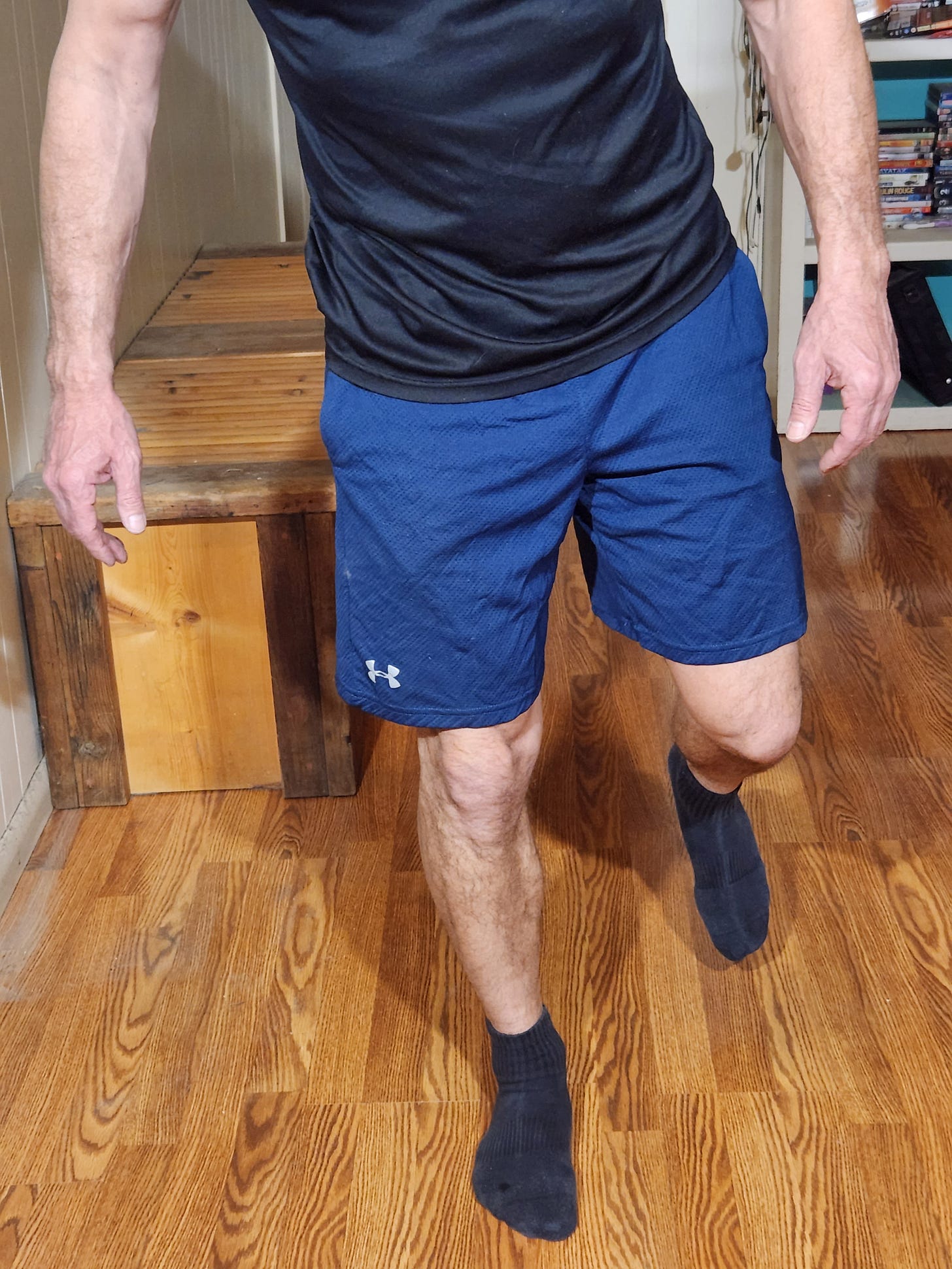Your balance computer
This is not medical advice.
In rehab, we treat many injuries related to falls, either from lack of balance, or ice, or dogs in the way. There is a large correlation between falls and mortality. Not right away, but the complications from the fall (broken bones, pneumonia from being laid up).
I’m a nerd. I am extremely interested in what our body can pull off. I’m paid to contemplate these things. Many of us take what our bodies accomplish for granted.
Balancing on one foot is one of them.
This is something that most of us have not done since we were children playing hop scotch. Or so we think. Walking is a series of balancing on one foot, just for a much shorter time span. This is also extremely important in sports. When we run and plant all our body weight on one foot, we must balance 5x our body weight in forces, and change direction.
I mostly have people balance on one foot in rehab, after an injury, or a stroke, or some other balance deficits are diagnosed. Teenage athletes also needs this training.
Many people are frustrated by their inability to balance on one foot for 30 seconds. They think it should just happen, even if they haven’t done it in 30 years. Yet balancing on one foot is not a conscious event. You don’t say to yourself, “fire this muscle at 28%, then this at 16%, for correction, etc.” Only your subconscious brain/computer pulls this off.
So the way to improve it is just by practice. The good part is you don’t have to think about it, just keep trying. The motor learning part of our nervous system will gradually improve your balance through repetition.
Frustration is a rehab killer. Emotions can make this process more difficult. I’m not in your shoes, so I’m sympathetic to the situation. I may one day have the same problem. I usually have patients stop, take a deep breath, and explain this narrative. It’s ok to keep failing at balance, in a safe manner in parallel bars, with someone spotting you. We can call it “failing,” but your motor learning process is really programming your brain to improve balance.
Leg strengthening will also improve balance. Balance exercises aren’t solely standing on one foot. There are many variations, including tandem balance, where one foot is in front of the other, like testing for DUI.
Have you seen the new robots that can dance and do back flips? At the center of that ability is a super computer, just like our brain. I don’t know if the robot computer can learn the same way ours can. It looks like that’s all changing with AI.




